*FYI - this post may contain affiliate links, which means we earn a commission at no extra cost to you if you purchase from them. Also, as an Amazon Associate I earn from qualifying purchases. Check out our Privacy Policy and Disclosure for more info.
From exciting cities to vast Arctic landscapes, the Canadian province of Québec offers so much for visitors to discover.
Québec is the largest of Canada’s provinces by area (and second largest by population), known for producing maple syrup and fierce hockey fans but there are definitely plenty more cultural and natural wonders to explore beyond those two things!
In this post, we’ll be sharing our top picks for places to visit in Québec, including the most fascinating cities and beautiful wilderness areas.
We hope you enjoy learning about this diverse region and be sure to let us know in the comments which Québec must-sees we should add to our list!
Québec City
As the capital of the province it’s not surprising that Québec City contains many of the prettiest and most popular tourist places in Québec.
Québec City sits on the St Lawrence River, a bit further up from Montreal and features many historic buildings dating from the original French settlement in the early 17th century.
The province of Québec is officially French-speaking and many of the place names in Québec City reflect this, such as the Petit-Champlain neighbourhood.
The cobblestone square of Place Royale is lined with old buildings and will make you feel like you’ve stepped right back in time to when Samuel de Champlain founded New France here in 1608. A visit to Notre-Dame-des-Victoires is a must, as it’s the oldest church in North America.
Other must-see attractions in Québec City include Lower and Upper Old Québec, a UNESCO World Heritage Site connected by funicular. Here there are many lovely boutiques, bars and restaurants lining the cobbled streets.
Also don’t miss out on a photo of the Fairmont Le Château Frontenac, an iconic hotel from 1893 that’s apparently the most photographed hotel in the world!
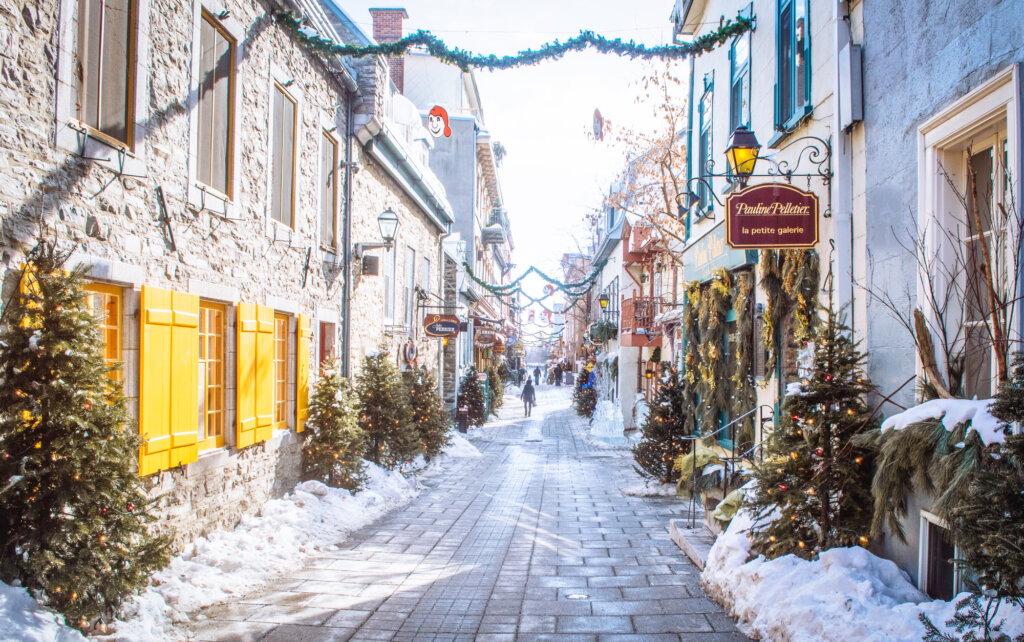
Montréal
While Québec City is the capital, Montréal is the most populated city in the province, as well as the second most populated in the whole of Canada. It’s also home to some of the best places to visit in Québec.
Located on the St Lawrence River (but on an island within the river), Montréal is lower down than Québec City, right by the border between Canada and the USA. The city got its name from Mt Royal (Mont-Réal in French), the three-peaked hill at the center of the island. It is also sometimes called “the city of a hundred steeples” due to the many churches, although the Notre-Dame Basilica is the most famous and most beautiful.
The oldest and most picturesque neighbourhood in Montréal is Vieux-Montreal, the heart of the original colonial settlement with many historic buildings, including the the Pointe-à-Callière museum. The Old Port area (Vieux-Port) is also lovely, with a giant Ferris wheel to enjoy the views.
Other attractions worth a visit in Montréal include the summit of Mont-Royal, the gorgeous Jardin Botanique (Botanical Garden), the Renaissance-style domed basilica of Oratoire Saint-Joseph (St. Joseph’s Oratory) and the circular biosphere at Parc Jean Drapeau.
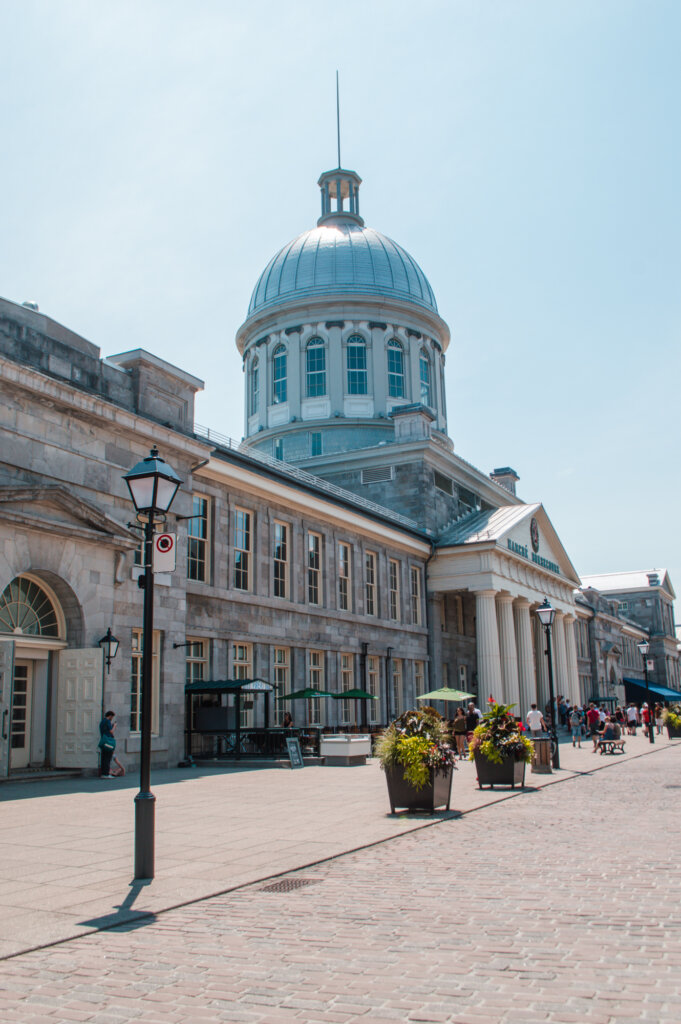
Montmorency Falls
On the outskirts of Québec City is one of the most famous Québec tourist attractions, the stunning waterfall known as Montmorency Falls.
It takes just 15 minutes to drive from Québec City to the 85-meter-high Montmorency Falls, so it’s perfect as a little day trip for a picnic, hike and photography. The falls lie within a park, Parc de la Chute-Montmorency, where there’s a panoramic circuit to walk all around the falls and see them from different (all stunning) viewpoints.
Within the park there’s also a cable car and suspension bridge for seeing the waterfall from above, along with a panoramic staircase which you can see in the top right of the below photo.
And for those in search of adventurous things to do, adrenaline seekers can also partake in a colossal zipline across the falls!
PRACTICAL INFORMATION FOR VISITING: The opening hours change seasonally so we recommend checking out the official website to see when it will be accessible. You can also see all the prices for entrance, parking, the cable car etc.
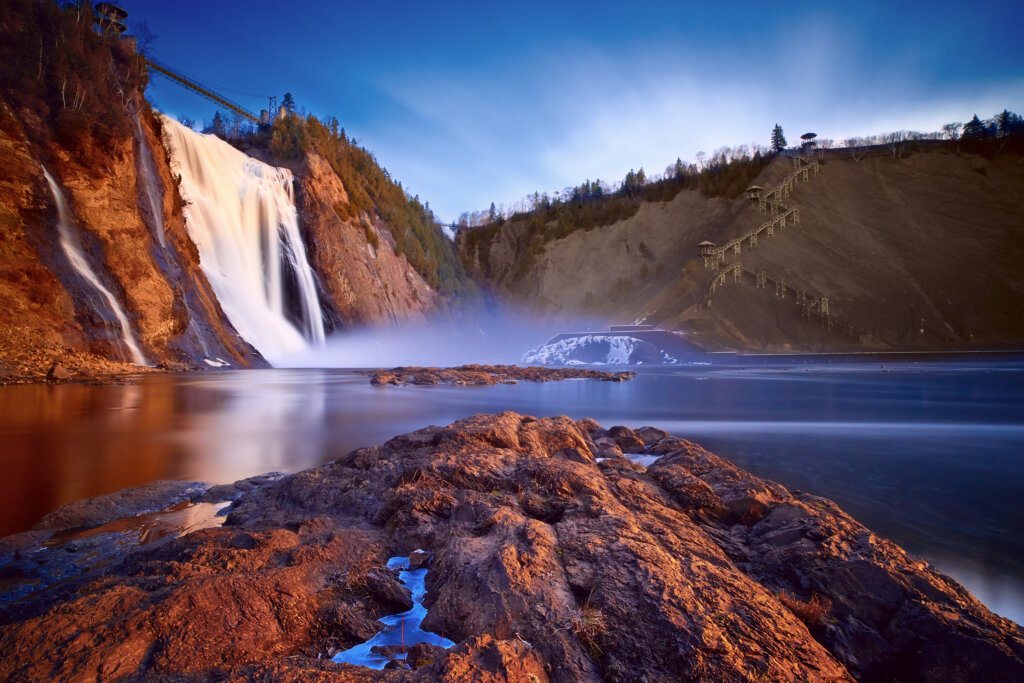
Jacques Cartier National Park
Just 50 kilometers north of Québec City, Jacques Cartier National Park is one of the most stunning places to go in Québec, especially if you only have time for a day trip from the capital city.
Of course, you won’t be able to see everything in one day, as the park covers an area of around 670 square kilometers, which is criss-crossed with over 100 kilometers of hiking trails. One of the main features of the park is the Jacques-Cartier Valley and River, which is very popular for canoeing and kayaking.
There are also biking trails, while during winter visitors can partake in snowshoeing, skiing, Nordic skiing, backcountry Hok skiing, wilderness skiing or kicksledding. If you want to explore for more than a day, there are a number of campsites, cottages and resorts to stay at during your trip.
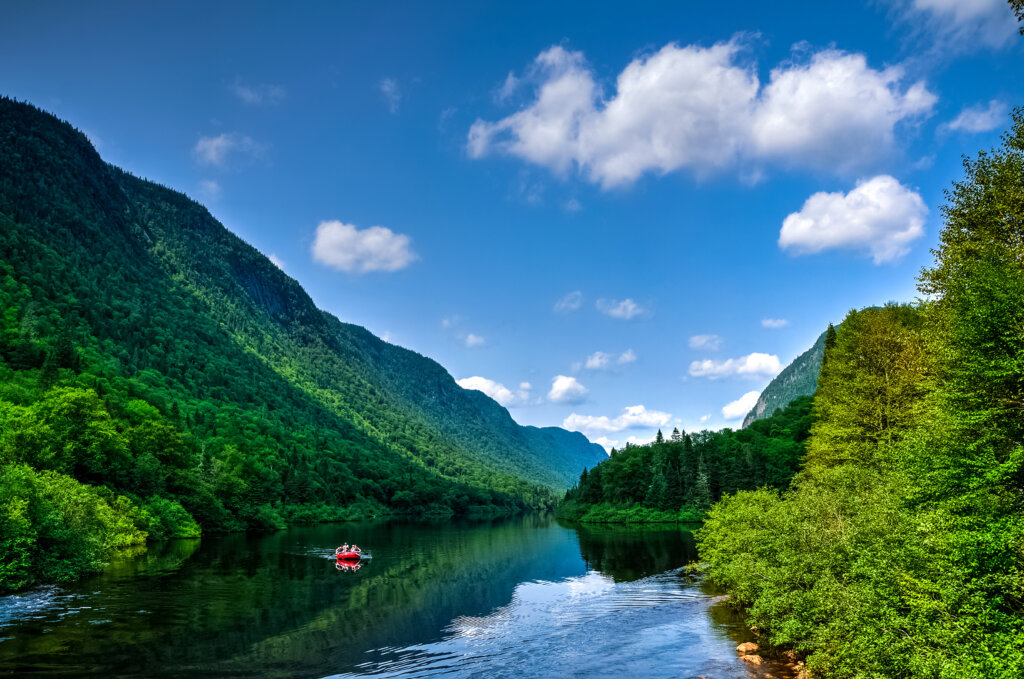
Hautes-Gorges-de-la-Riviere-Malbaie National Park
Hautes-Gorges-de-la-Riviere-Malbaie National Park might be the biggest mouthful of a name for any park we’ve ever heard of, but that doesn’t prevent it from also being one of the most stunning Québec places to visit.
Covering 224.7 square kilometres (86.8 square miles) of boreal forest, the park is centered around a series of deep valleys with mountains creating walls of more than 800 meters in height. Because of this there are many stunning waterfalls to see, the highest one is 160 meters (520 feet) tall.
Hautes-Gorges-de-la-Riviere-Malbaie National Park is home to many animals that are typical to boreal forests, including American pine martens, caribou, beavers, moose, black bears and Canadian lynx. Aside from wildlife spotting, visitors can enjoy hiking, fishing, kayaking, canoeing, cycling, ice camping and riverboat cruises. There are three campsites within the park as well.
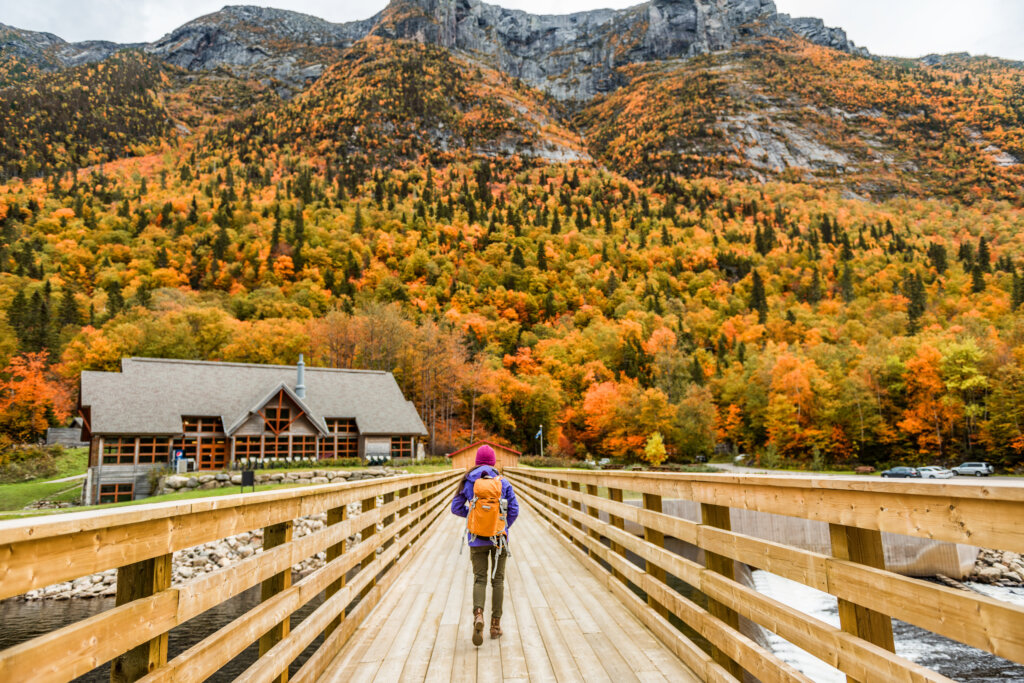
Gaspé Peninsula
If you’re into incredible natural scenery and adventurous activities then you will definitely find that the Gaspé Peninsula is one of the best vacation spots in Québec.
The Gaspé Peninsula (called Gaspesia in French) is the large arm located on the right side of Québec, reaching into the Gulf of St Lawrence under the St Lawrence River and above the province of New Brunswick. The name Gaspé comes from the local Miꞌkmaq people’s word gespe’g which means ‘end’, since it is the end of the land (in Québec at least).
There are many beautiful places on the Gaspé Peninsula, which is known for sheer sea cliffs along the northern side. Percé Rock is a rock formation that can be seen from here, looking like a giant ship from a distance, with a natural arch piercing the rock when you see it up close.
Forillon National Park is located on the very tip of the peninsula and home to some beautiful sights such as the La Chute waterfall. Cap-Bon-Ami within the park offers incredible views over the water, and may also provide whale or seal spotting opportunities, as does the Mont-St-Alban viewpoint and Cap Gaspé right down on the easternmost tip. Make sure you also visit the beautiful historic site of Cap-des-Rosiers Lighthouse, which sits just above the edges of Forillon National Park.
Gaspesie National Park is home to another stunning waterfall, the Saint-Anne Waterfall, while the town of Cap Chat has an interesting rock formation known as The Cat.
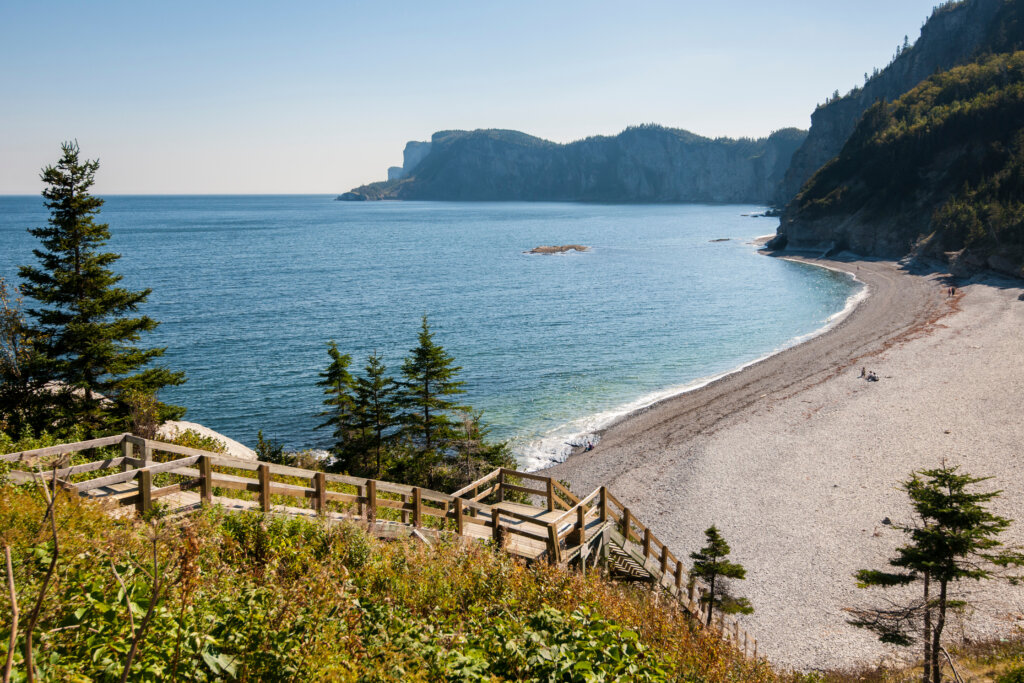
Tadoussac Bay
Tadoussac Bay (or Baie de Tadoussac in French) is a picturesque bay located where the Saguenay River meets the larger St Lawrence River, and often included among lists of the most beautiful bays in the world.
The village of Tadoussac which overlooks the bay was originally called Totouskak by the Innu indigenous people, who have lived in the area since the Paleolithic Age. In 1600 Tadoussac also became the first French settlement in North America, and it is still a charming place to stay while enjoying the natural wonders nearby.
Today Tadoussac Bay straddles two gorgeous national parks: the Saguenay–St. Lawrence Marine Park and Parc national du Fjord-du-Saguenay (more on that later). This confluence where the two rivers meet attracts many marine animals since it’s a rich feeding area (and very deep), so visitors might spot a variety of whale species, from minke to blue whales!
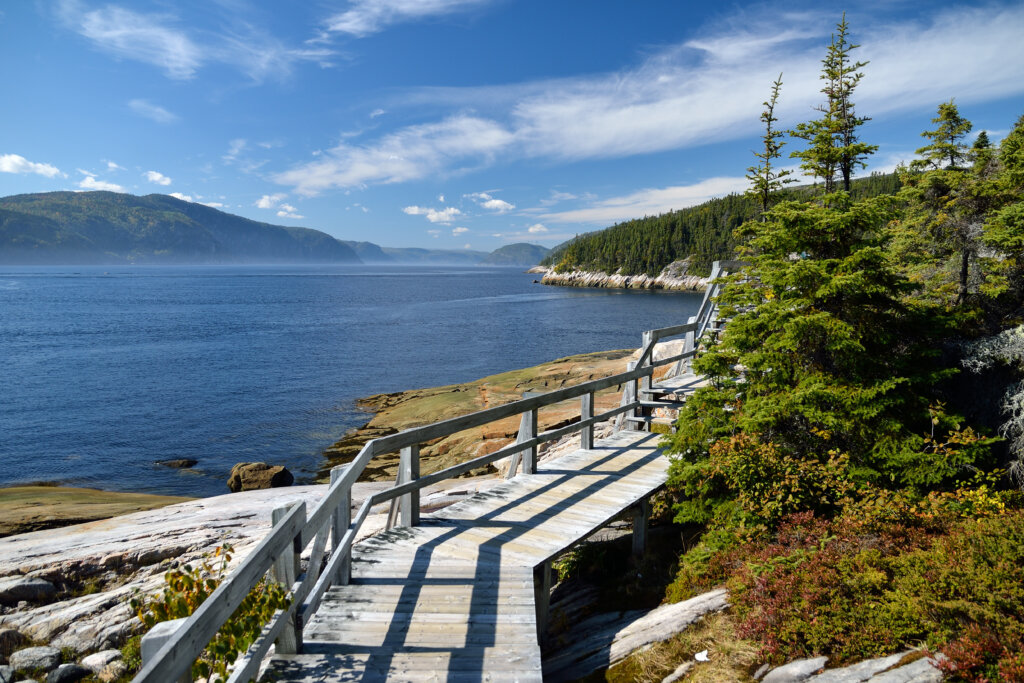
Saguenay Fjord
Saguenay Fjord is one of the most beautiful fjords in the world, which definitely puts it at the top of the list of nice places to visit in Québec.
It’s located within the Saguenay River (Rivière Saguenay in French) which drains into the St Lawrence River at Tadoussac, but a trip up the river is definitely worth it if you want to see stunning cliffs created by glaciers thousands of years ago. The fjord also attracts many migrating birds, the Greenland shark and beluga whales.
One of the things that makes Saguenay Fjord so unique is that there are quaint little villages dotted along the cliffs, meaning you can explore and stay at different places as you kayak or even drive the 187-mile Route du Fjord. Winter and summer activities abound, so it’s a fun destination at any time of year.
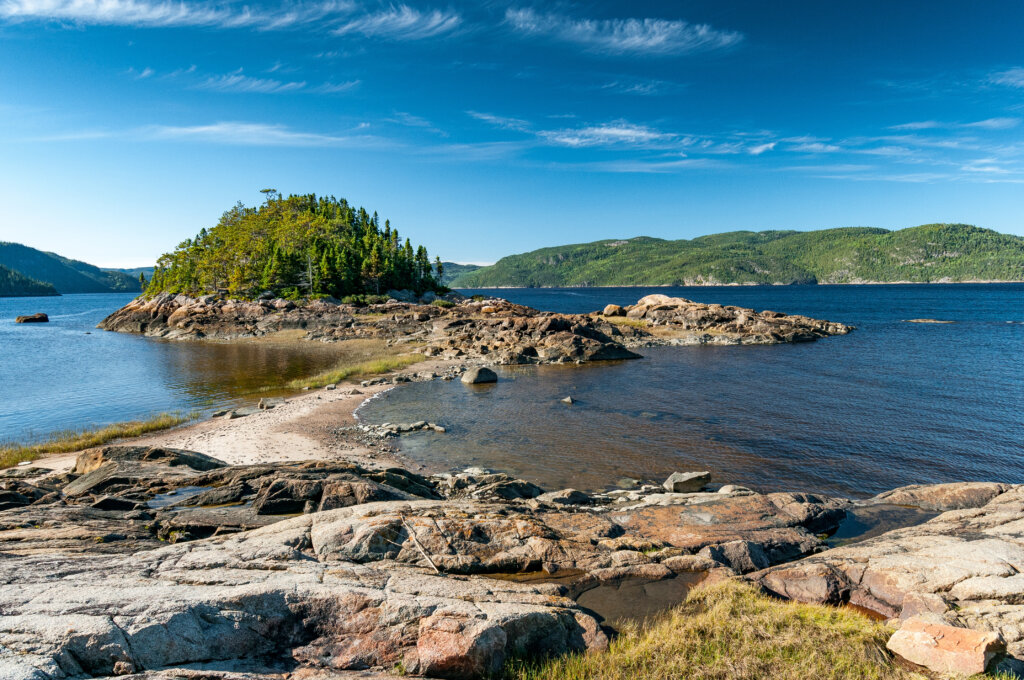
Mont Tremblant National Park
Mont Tremblant National Park will easily top any list of cool places to visit in Québec, especially as it’s located right near the popular ski resort of Mont-Tremblant.
While the ski resort draws snow bunnies, Mont Tremblant National Park is a kayaker’s dream, with six great rivers along with 400 lakes and streams. Lake Cypress is the largest of the lakes within the park, while Petit Lac Monroe is often considered the prettiest. There’s also a camping site and visitor center beside it.
Like most national parks, Mont Tremblant offers plenty of activities for visitors, such as hiking, swimming, canoeing, camping, fishing, Via Ferrata and cycling in summer, or skiing, dog-sledding and snow-shoeing in winter. The park is home to many iconic animal species as well, including bald eagles, moose, deer, wolves, foxes, bears, beavers and otters.
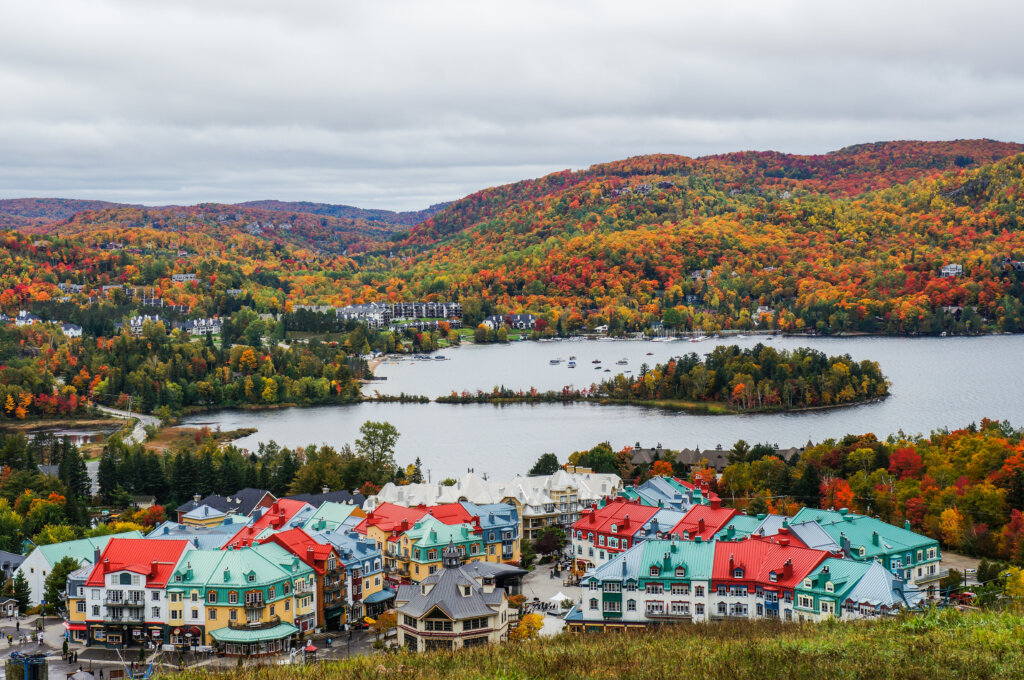
Port-au-Persil Beach
Port-au-Persil is one of the prettiest little villages in Québec, located on the banks of the St Lawrence River about an hour’s drive from Tadoussac.
The village has lots of houses dotting the riverside, as well as an iconic white wooden chapel right by the water, but it’s the small rocky beach which we personally find absolutely charming. Here there are many stone cairns (piles of stones balancing on top of each other) perched next to the main pier, which is also gorgeous.
Port-au-Persil beach is one of those spots that looks distinctly different during each season, but always stunning, whether there’s a backdrop of snow or leaves in red, yellow and orange. The sight of waves crashing just below the church also makes for great photos.
If you’re in Port-au-Persil, make sure you also check out La Poterie de Port-au-Persil for fine ceramics or to join a pottery class!
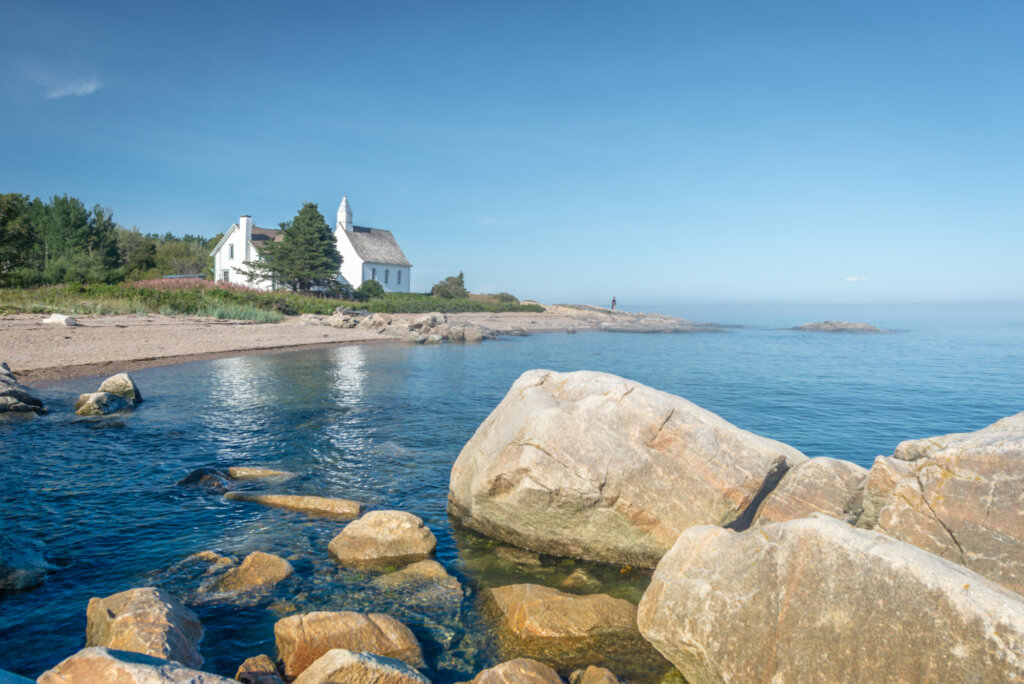
La Mauricie National Park
La Mauricie National Park is another excellent place in Québec for kayak and canoe enthusiasts, with 150 lakes and a canoe camping circuit to explore.
This national park is named for the Saint Maurice River (Rivière Saint-Maurice in French) which it borders, and lies within the southern Laurentian Mountains, one of the oldest mountain ranges in the world. There are many hiking trails and even a 63-kilometre scenic parkway for driving if you’re looking for a more low-key adventure.
Along with picturesque lakes, La Mauricie National Park is home to many stunning waterfalls, as well as animals such as moose, black bears, beavers, otters and rare wood turtles. If you really want to splash out you can even enjoy the park’s beauty from the air on a scenic seaplane flight!
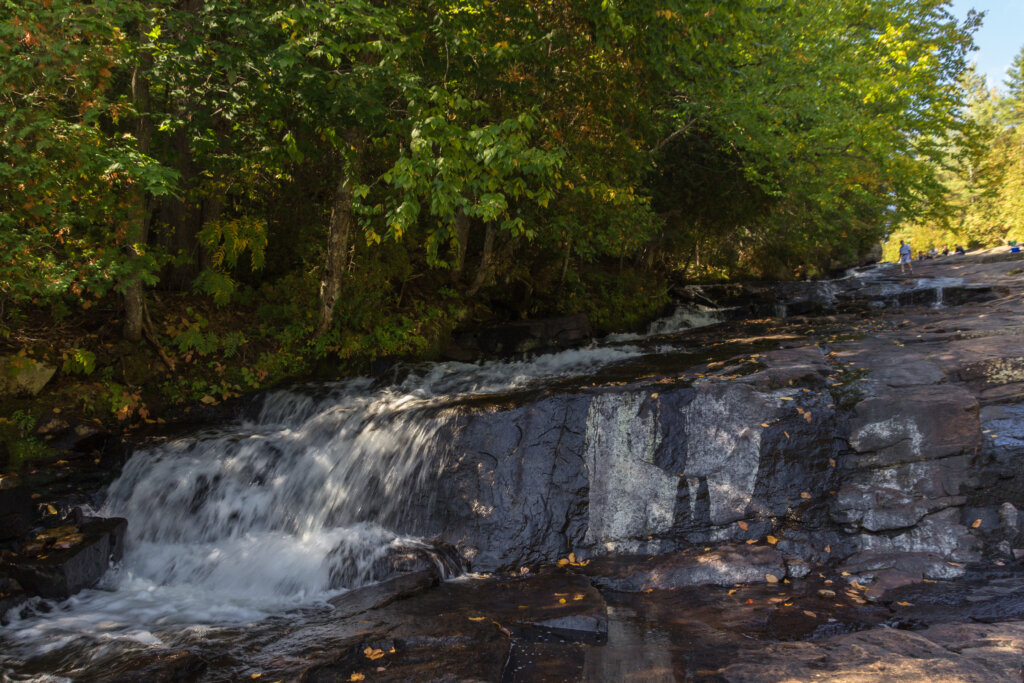
Grands-Jardins National Park
Located about halfway between Québec City and Tadoussac (although a little inland from the St Lawrence River) is the Grands-Jardins National Park, another incredible natural area in Québec.
The Grands-Jardins National Park is one of the main areas within the Charlevoix World Biosphere Reserve, a UNESCO World Heritage Site that’s home to a collection of mountain peaks as well as more than a hundred bodies of water. It also contains the remnants of a meteorite strike from 360 million years ago; the crater of which can still be seen from the summit of Mont du Lac des Cygnes (Swan Lake Mountain).
There are a variety of different elevations within the park, which also means there are many different eco-systems; from taiga to alpine. It’s also well-covered in heather, which blankets the ground with purple at the end of summer.
Visitors will find numerous species of birds and animals while exploring the park via hiking, canoeing, kayaking, rock-climbing, snow-shoeing, skiing or stand-up paddleboarding.
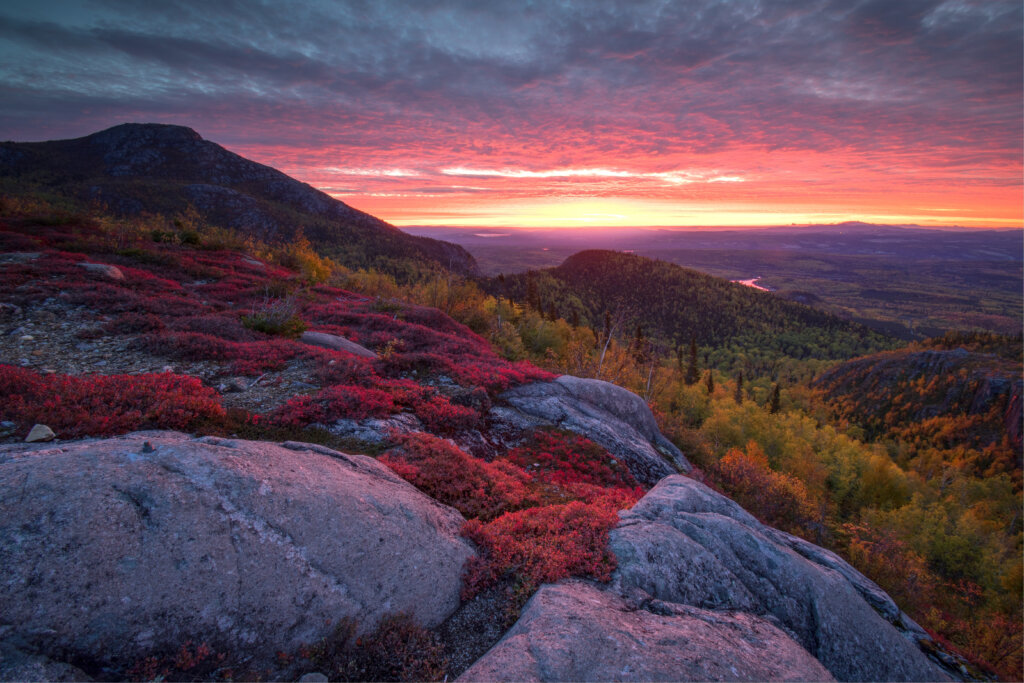
Mingan Archipelago National Park
Located in the far eastern part of Québec, within the Gulf of St Lawrence, the Mingan Archipelago National Park consists of nearly a thousand islands and islets containing many unique rock formations.
This string of islands is located on the north shore of the Gulf of St Lawrence, and since they are mostly made up of limestone the ocean has caused a lot of erosion over the years. The waves eroding the stones are what create the fascinating rock formations, which are the largest group of such monoliths within Canada.
As well as these natural sculptures, the Mingan Archipelago National Park is a popular destination for spotting the many species of whales and seals that like to frolic in the surrounding waters, while seabirds wheel above. Head to the islands for the chance to see wild grey seals, minke whales, dolphins, harbour seals, humpback whales, porpoises, fin whales, and harp seals.
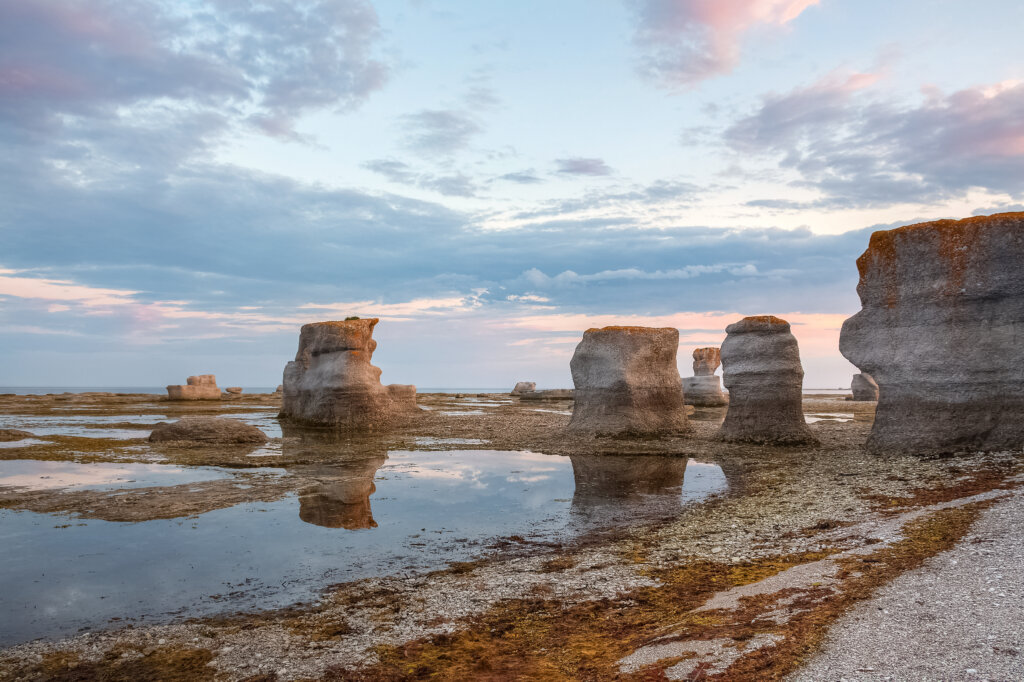
Havre Aubert Island
Havre Aubert Island (Île du Havre Aubert in French) is located at the southern end of the Magdalen Islands archipelago in the Gulf of St Lawrence. While it’s located closer to the provinces of Prince Edward Island and New Brunswick, it nevertheless remains one of the most unique places to visit in Québec.
Located at the southern end of the archipelago, Havre Aubert Island has the most forests out of the islands which make it ideal for hiking. Of course, there are also some truly stunning beaches as well, along with sand dunes, pretty colorful houses and lighthouses dotting the coastline.
For those keen on a road trip, there’s a coastal road which takes visitors all around the west side of the island on a very scenic route. There’s also the historic site of La Grave on the eastern end of the island which is well worth exploring, as one of the oldest fishing grounds in the archipelago.
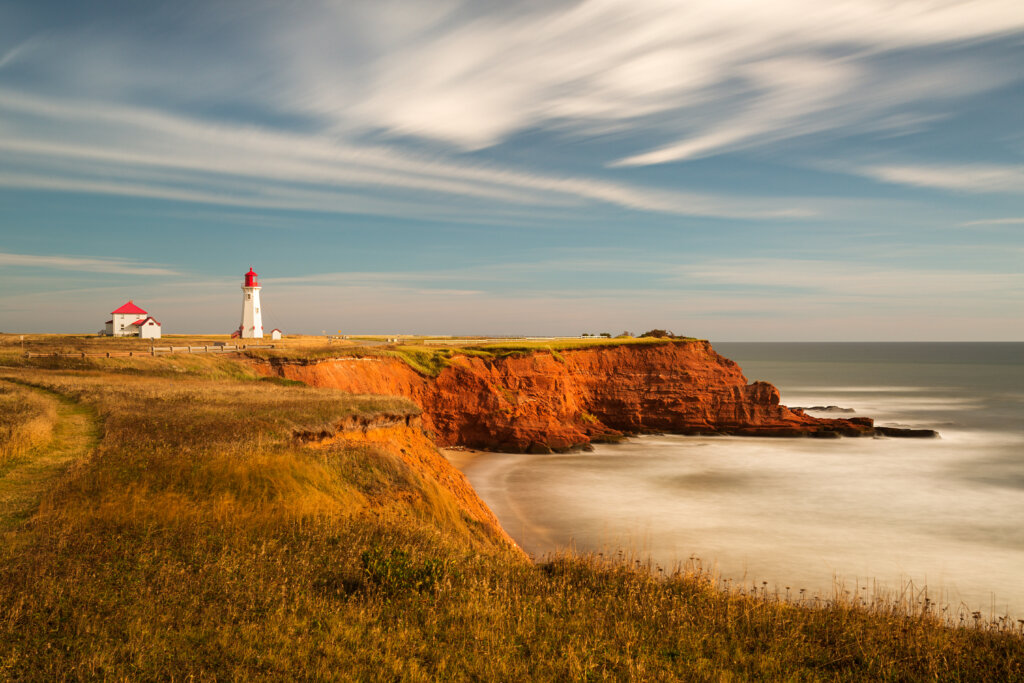
Did We Miss Any of Your Favourite Places to Visit in Québec?
Let us know in the comments so we can add more amazing spots to our list!